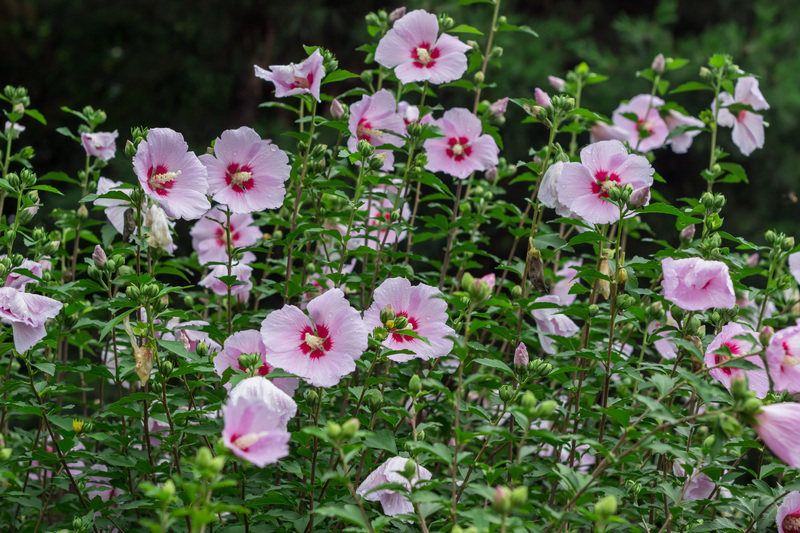Frequently Overlooked Ways to Deal With Tree Stumps
When a tree is removed, homeowners are often left with a stubborn tree stump sitting right at ground level. Not only can this remnant be an eyesore, but it can also be a tripping hazard and a breeding ground for pests and diseases. Most articles simply suggest digging, grinding, or hiring a professional, but did you know there are many overlooked ways to deal with tree stumps? In this comprehensive guide, we delve into creative, eco-friendly, and cost-effective methods for tree stump removal, management, and repurposing you may never have considered before.
Why Should You Remove or Treat Old Tree Stumps?
- Prevent Pest Infestations: Stumps serve as a home for termites, ants, and fungi, which may eventually spread to healthy plants and buildings.
- Enhance Aesthetics: Clearing stumps improves your garden's appearance and allows new landscaping options.
- Prevent Regrowth: Some tree stumps can sprout new shoots, making them harder to eradicate over time.
- Safety Concerns: Stumps can be tripping hazards, especially for kids and pets.
With these reasons in mind, it's important to address your tree stump problem before it leads to bigger issues.

Understanding the Basics of Stump Removal
The traditional methods to remove tree stumps include digging them out, burning, or stump grinding. While effective, these can be labor-intensive, expensive, or even regulated in certain areas. Instead, let's explore less conventional, often overlooked solutions that might be perfect for your yard.
Frequently Overlooked Ways to Deal With Tree Stumps
1. Natural Decay Acceleration Techniques
If you've got time on your side, encouraging natural decomposition can be a gentle, eco-friendly option for how to deal with tree stumps. While simply waiting can take decades, you can speed up stump decay using these strategies:
- Drill Holes and Add Compost: Use a drill to bore holes into the stump and fill them with compost, fertilizer, or a high-nitrogen substance (like cow manure or blood meal). Rainwater and beneficial microbes will help break down the wood faster.
- Cover and Moisturize: Place a thick, dark tarp or plastic sheeting over the stump. This keeps the stump moist--perfect conditions for decay. For best results, combine with regular watering and adding composted material every few months.
- Fungi Inoculation: Introducing wood-decaying mushrooms (like oyster or wine cap mushrooms) can rapidly degrade cellulose within the stump. Drill holes, insert mushroom spawn, and watch as nature works in your favor! Plus, you'll get edible mushrooms in the process.
Pro Tip: These methods are best for stumps in out-of-the-way areas since they may take several months to a few years to fully decompose.
2. Chemical-Free Stump Rotting Alternatives
Chemical stump removers are commonly sold, but they come with environmental drawbacks. Here are natural and often-missed solutions for tree stump decay:
- Soil Microbes Boost: Regularly add kitchen scraps or compost to the area. The mix of microbes, healthy bacteria, and worms will contribute to breaking down the wood.
- Epsom Salt Technique: Epsom salt draws moisture from dead stumps, speeding up decay. Drill holes and pack them with salt, then water the area. Unlike some chemical removers, Epsom salt won't harm surrounding plant life if used in moderation.
- Mulch Mountains: Pile mulch over and around the stump. Not only does this help moisture retention and microbial growth, but it also conceals the stump while it breaks down naturally.
3. Creative Uses for Old Tree Stumps
A truly overlooked way to deal with tree stumps is not to remove them at all, but to repurpose them. Here are a few functional and decorative ideas:
- Planter or Fairy Garden: Hollow out the center and fill it with soil, creating a rustic flower planter, a fairy village centerpiece, or even a succulent display.
- Garden Furniture: Use your stump as a natural stool, side table, or base for a birdbath. Sand and varnish the surface for a polished look.
- Wildlife Habitat: Older stumps can be a boon for beneficial insects, birds, and even small mammals. Drill holes to create a bee hotel, or simply let local fauna use the space as they like.
- Outdoor Art: Carve interesting shapes, faces, or patterns into the stump for a unique garden feature that sparks conversation.
4. Manual Digging and Chopping (With A Twist!)
Manual removal of stumps is usually considered hard work, but with a few overlooked tweaks, it can be made far easier:
- Use Water to Loosen Soil: Thoroughly soak the area around the stump a day beforehand. Moist soil is much easier to dig and exposes roots more quickly.
- Lever Tools: A heavy-duty pry bar or mattock can let you "pop" smaller stumps or loosen roots enough to access and chop them easily.
- Root Cutting with a Chainsaw: After exposing the main roots, use a chainsaw or reciprocating saw to cut major roots rather than relying on axe work alone.
- Use Rebar or Pipe for Leverage: Drive lengths of rebar under the stump and use them as handles to twist and break the root system--much easier than digging all the way around.
5. Applying Environmentally Friendly Stump Killer Alternatives
Not all stump killers are toxic. If you want faster results than natural decay, but wish to avoid harsh chemicals, these overlooked options offer a happy middle ground for removing tree stumps naturally:
- White Vinegar: For small stumps, drill holes and inject concentrated white vinegar. The acidity helps break down the lignin in wood.
- Rock Salt Application: As with Epsom salt, filling drilled holes with rock salt can accelerate drying and decay (be careful, as too much salt can harm the surrounding soil for future planting).
- Soda and Sugar Water: Sugary solutions attract beneficial bacteria and fungi, speeding decomposition through increased biological activity.
6. Integrated Landscaping: Disguise Rather Than Remove
For stumps that are stubborn or too costly to remove, consider integrating them into your landscape design:
- Stone Surrounds: Build a stone or brick circle around the stump and use it as a raised planting bed or feature.
- Decorative Enclosures: Lattice panels, garden screens, or trellises can help hide a stump while supporting climbing plants or vines.
- Deck or Patio Overbuild: Incorporate the stump as support for a small deck, walkway, or seating area, giving it a new lease on life.
Frequently Asked Questions About Tree Stump Management
How long does it take for a tree stump to rot naturally?
A tree stump can take anywhere from 3 to 15 years to decompose naturally, depending on the species, size, and climate. Using decay acceleration methods can reduce this to as little as 1-3 years.
Are there fast, chemical-free ways to remove a tree stump?
While there's no instant, chemical-free solution, a combination of drilling, moistening, and adding compost or Epsom salt can noticeably speed up the process while being safe for the environment.
Can I burn a stump to remove it?
Burning is sometimes possible, but it's subject to strict local fire and safety regulations, and isn't always effective without prior preparation. If allowed, always consult local ordinances and take proper safety precautions.
Is it possible to use a tree stump creatively in the garden?
Absolutely! Many homeowners transform stumps into planters, seating, rustic sculptures, or wildlife habitats--adding character and utility to their outdoor spaces.
Tree Stump Removal Safety Tips
- Wear protective gear when chopping, drilling, or handling chemicals.
- Check for utility lines before digging--contact local utility companies to mark buried lines.
- Dispose of debris responsibly; rotting stumps can spread disease to other plants if thrown in compost piles.
- Supervise children and pets around stump removal sites or exposed chemical treatments.
Cost Comparison: Conventional vs. Overlooked Methods
Let's compare the cost, labor, and convenience of typical and frequently overlooked ways to deal with tree stumps:
| Method | Cost | Labor | Time Required |
|---|---|---|---|
| Professional Grinding | High | Low | Same Day |
| Manual Digging (with enhancements) | Low | High | 1-2 Days |
| Accelerated Natural Decay | Very Low | Low | Months to Years |
| Chemical-Free Rotting Methods | Low | Low | 1-2 Years |
| Creative Repurposing | Minimal | Low to Medium | As desired |

Eco-Friendly Considerations
By leveraging eco-friendly tree stump solutions, you help maintain soil health, promote biodiversity, and minimize chemical runoff. Natural decomposition encourages soil-building fungi and beneficial insects, while creative repurposing reduces waste and adds unique character to your landscape.
Conclusion: Find the Right Solution for Your Landscape
Tree stumps don't have to be an obstacle in your yard or garden. By exploring these frequently overlooked ways to deal with tree stumps, you can select a strategy that best matches your goals, timeline, and environmental values. Whether you're keen on a green approach, seeking practical manual removal tips, or excited to transform an old stump into a garden feature, the options are much broader than the standard advice.
Next time you're faced with a stubborn tree stump, consider these unique, effective, and often underutilized solutions--you may even find that what once was a nuisance becomes a highlight of your outdoor living space!